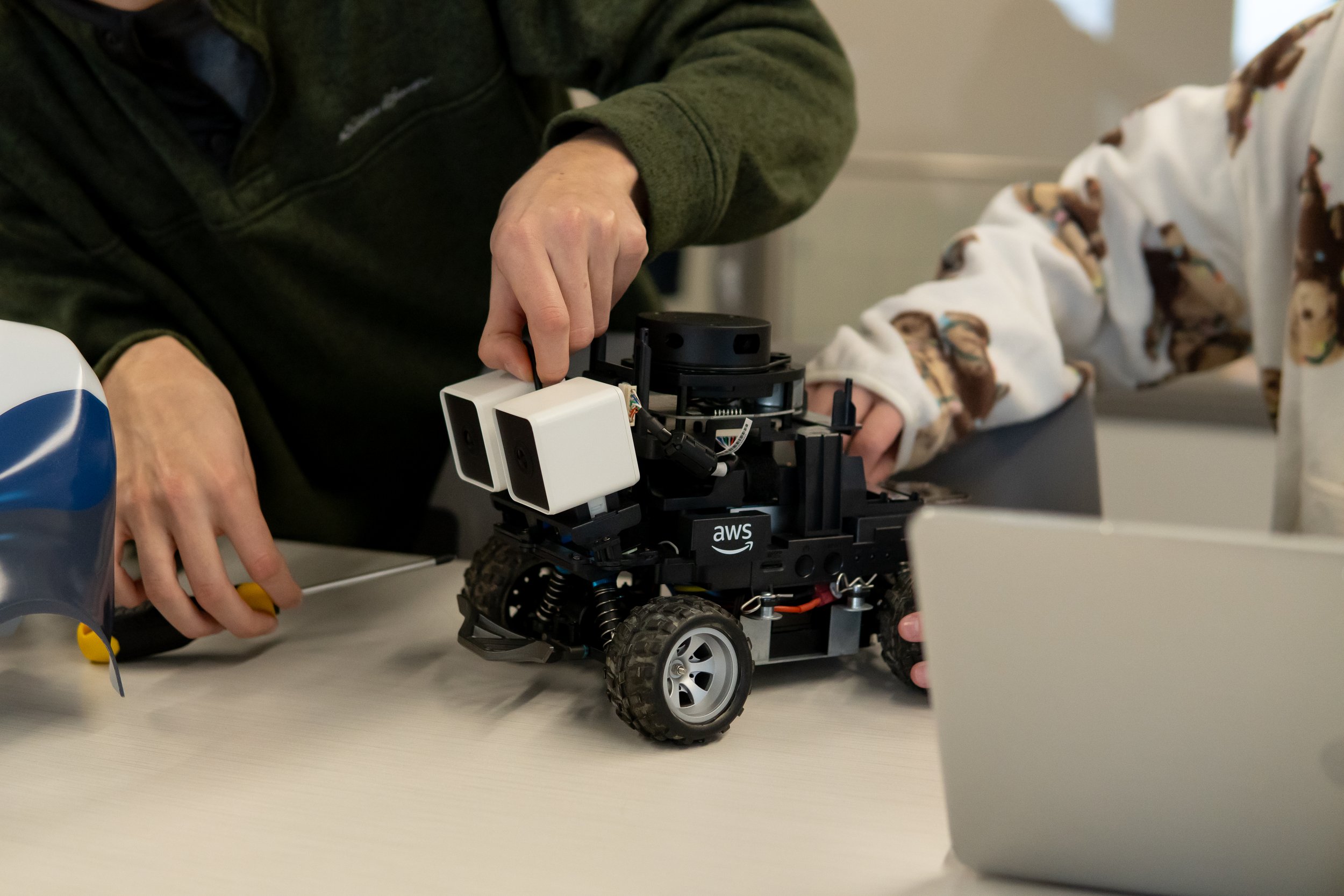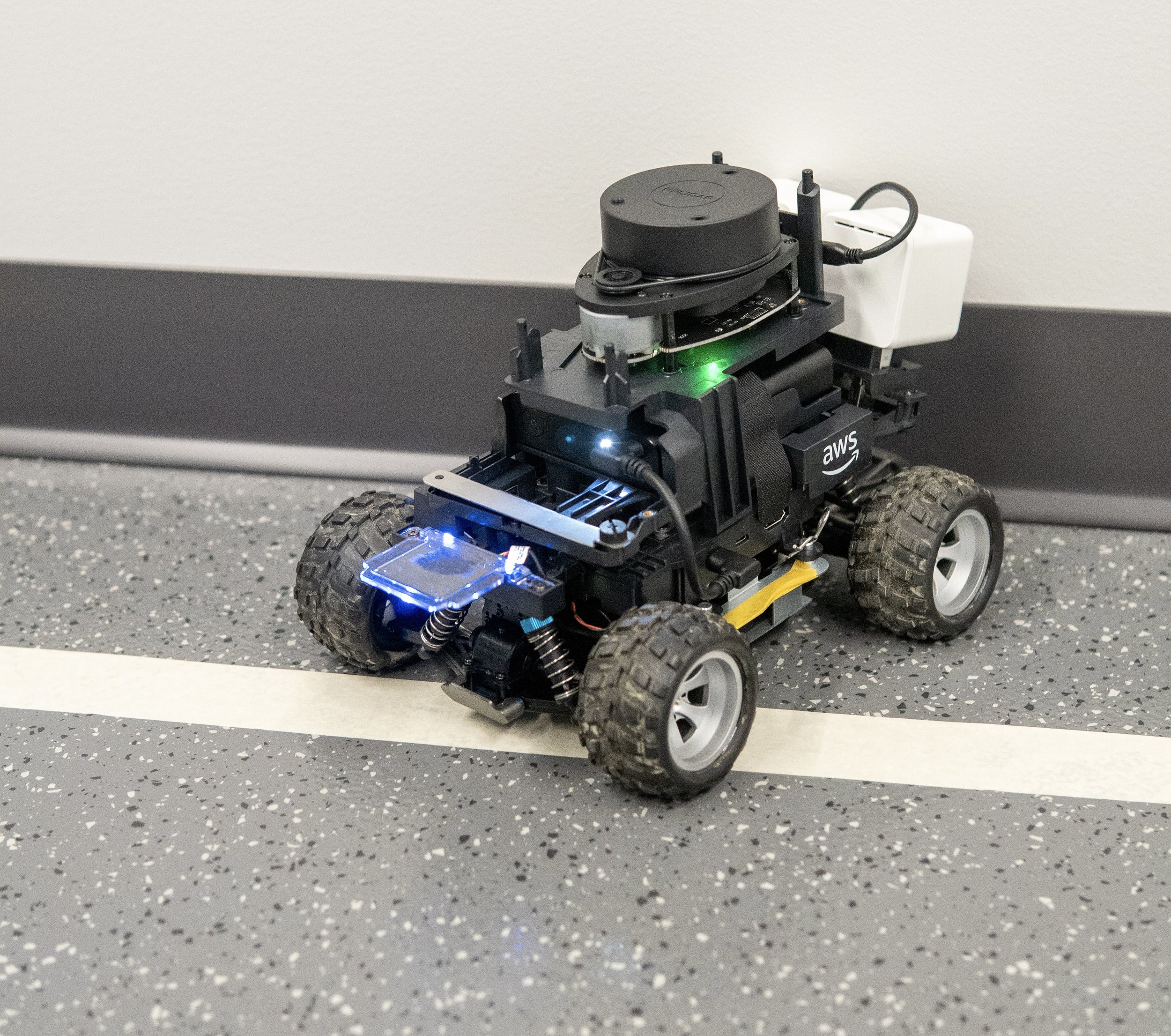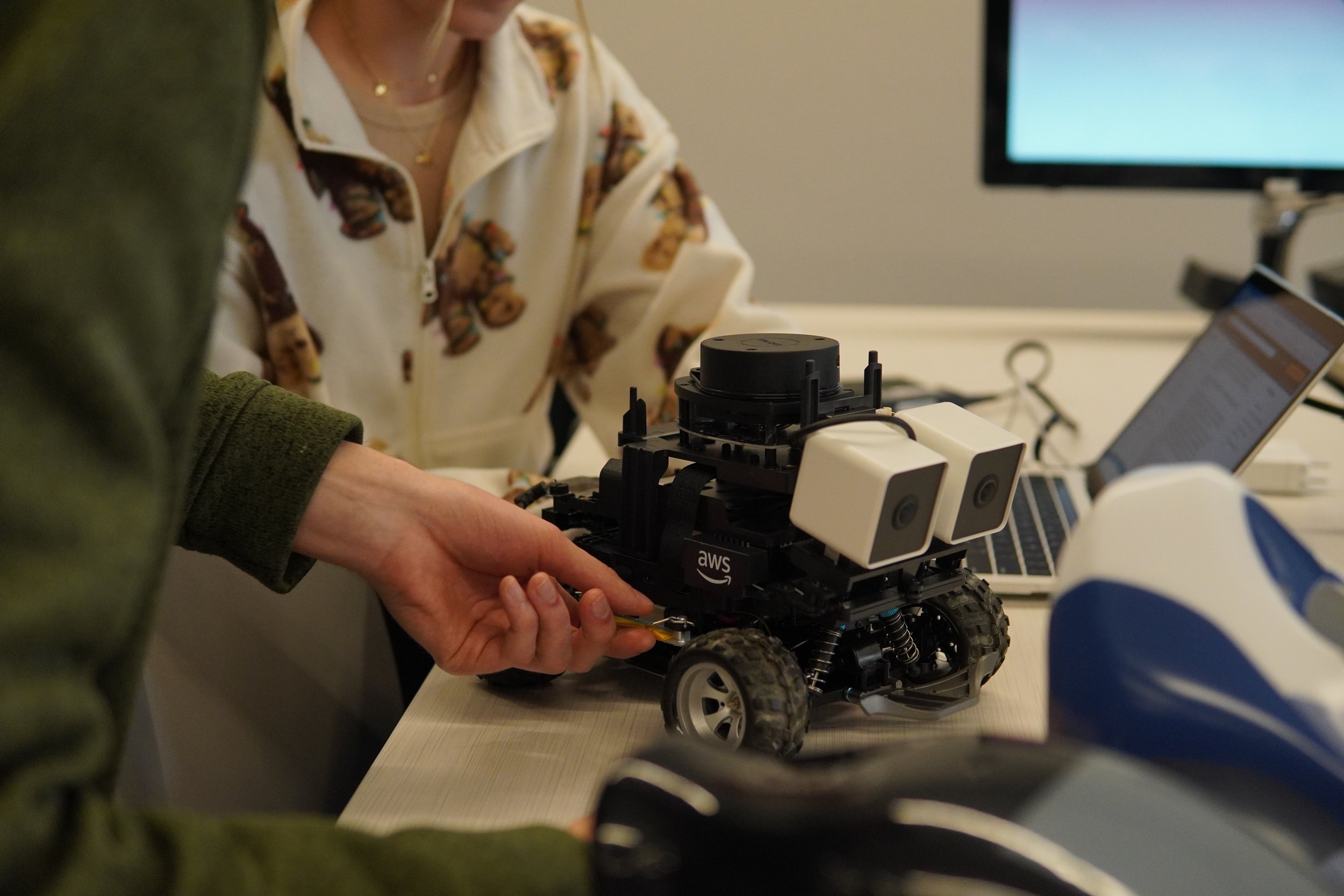DeepRacer
DeepRacer is a 1/18th scale autonomous car. It is trained via a reinforcement, reward-based learning model to enable the car to make desirable, positive actions, and avoid making undesirable mistakes. The reinforcement learning model is digitally trained through AWS and then uploaded to the physcial vehicle, enabling it to drive autonomously. AWS Deepracer utilizes multiple sensors to detect the road and obstacles in its surrounding environment including two stereo cameras and a LiDAR sensor.
Pushing the Limits of Autonomous Driving
Deepracing with AI is an exhilarating and groundbreaking field that merges advanced artificial intelligence with the captivating world of motorsports. It has revolutionized the way autonomous vehicles are developed and tested, propelling the boundaries of innovation and technology to new frontiers.
At its core, deepracing with AI involves the development of AI algorithms and deep learning models that enable autonomous vehicles to navigate racetracks with precision, speed, and skill. These cutting-edge technologies empower self-driving cars to understand complex environments, make split-second decisions, and execute maneuvers at levels comparable to or, in some cases, even surpassing those of human drivers.
The process begins with extensive data collection, where high-performance vehicles equipped with an array of sensors and cameras capture crucial information about the track, surroundings, and a human driver's actions. This data is meticulously analyzed, labeled, and used to train deep neural networks through the revolutionary technique of deep learning.
Through countless iterations, the AI models are refined and honed to interpret visual cues, predict the behavior of other vehicles, anticipate track conditions, and optimize racing strategies. Reinforcement learning techniques are often employed to enable autonomous vehicles to learn through trial and error, gradually improving their racing skills through exposure to simulated or real-world racing scenarios.
Deepracing with AI not only serves as a captivating spectacle but also serves as a testing ground for the development of advanced autonomous driving systems that can be applied to everyday transportation. By pushing the limits of what AI-driven vehicles can achieve in the high-stakes environment of competitive racing, engineers and researchers uncover weaknesses, identify areas for improvement, and iterate on their algorithms to enhance overall safety, responsiveness, and performance.
The implications of deepracing with AI extend beyond the confines of racetracks. The technologies developed through this pursuit have the potential to make our roads safer, reduce accidents through highly advanced accident avoidance systems, and pave the way for the widespread adoption of autonomous vehicles in various sectors, including transportation, logistics, and public services.
However, there are challenges associated with deepracing with AI. Ensuring that the AI algorithms are robust, reliable, and capable of handling unpredictable situations is of paramount importance. It requires goal-oriented AI models that balance speed and precision, while also considering both racer performance and safety.
Legal and ethical concerns also arise in the context of deepracing with AI. Striking a balance between the thrill of racing and maintaining safety standards requires careful regulation, transparent data collection, and responsible decision-making. Ensuring that AI-driven vehicles integrate seamlessly with human-driven counterparts and respect the rules of the road is crucial in fostering a harmonious coexistence.
All in all, deepracing with AI is an extraordinary development that showcases the extraordinary potential of artificial intelligence in enhancing autonomous driving capabilities. As development and advancements in this field continue to accelerate, society can look forward to safer roads, improved transportation systems, and a future where autonomous vehicles become an integral part of our daily lives.





